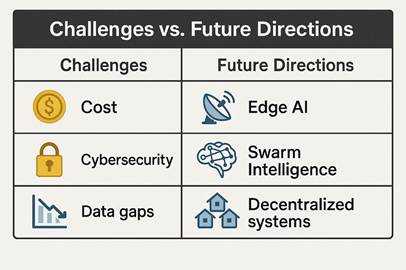

AI methods for energy storage systems are 30% more efficient than older systems, and such a breakthrough will change everything toward sustainable energy in the future. As demand for clean energy increases and renewables become more unpredictable, AI is taking mechanical energy storage methods like flywheels or compressed air systems to a whole new level. These systems have transcended their passive hardware status to become intelligent agents capable of foreseeing energy requirements, self-adapting in real time, and self-diagnosing before failures occur. In AI-enabled flywheel systems alone, the downtime has been reduced by almost 28%, aided by smart control and predictive maintenance. This fusion of mechanical reliability and AI is paving the way for energy storage and management like never before. This blog discusses how this potent combination creates the next generational round of sturdy, efficient energy infrastructure.
Mechanical energy storage refers to the conversion of electrical energy into mechanical motion or potential energy for subsequent utilization. The common systems involved include flywheel, compressed air energy storage (CAES), and pumped hydro storage (PHS); these systems are massively scalable and last long, which is why they suit grid-scale balancing of energy. Their main aim is to smooth out the variable supply of renewables such as solar and wind by storing these energy surpluses and releasing them at peak demands. Such operations have become crucial in modern grids for frequency regulation and as an emergency power backup, to ensure that the electricity supply remains stable.
Artificial intelligence is now finding itself into these storage systems in order to increase their overall reaction and reliability. AI algorithms watch performances, in real-time, assess performance by making use of sensor data to discover inefficiencies, and render optimization suggestions. Furthermore, AI predictive models allow these systems to forecast energy demand, thereby allowing them to accommodate such changes in their storage and release cycles. When AI is combined with machine learning, it provides advanced control by analyzing consumption patterns, thereby optimizing efficiency without any human intervention. In the complex space of microgrids and automated decision-making, artificial intelligence acts as the brain behind regenerating energy flow from source to sink.

Figure 1: Advantages of AI Integration
The most prominent benefits from the integration of AI into mechanical energy storage are operational improvements. First, AI may increase operational efficiency by 30% in actual hybrid system studies. Second, it lessens costly breakdowns by enabling predictive maintenance, whereby AI observes for early warning signs so as to be able to conduct timely interventions. Such interventions enhance the lifespan of components and reduce maintenance overheads. Third is the precision and automation that AI affords, ruling out any potential human error in estimating loads, charge cycles, and possible unwanted functions in system calibration.

Figure 2: Challenges and Future Recommendations
Artificial intelligence is transforming mechanical energy storage systems from passive components into intelligent, responsive assets within the energy grid. The integration of AI into flywheels, compressed air storage, and pumped-hydro technologies gives these storage systems advanced abilities to forecast the energy demand curve, i.e., real-time optimization of operational efficiency and predictive maintenance capabilities. All of these mean efficiencies, with the possibility of increasing by up to 30%, and greater downtime reduction and decreased maintenance costs. A series of case studies has shown the visible benefits of this integration from smart grids with AI-driven flywheels to wind farms optimized for compressed-air systems.
High implementation costs, low data quality, and cybersecurity vulnerabilities present challenges to further unlocking the potential of AI in energy storage. Future focus will be devoted to the decentralized intelligence of autonomous decision-making, thereby requiring immediate responses with the use of edge computing and local AI models. Research continues in federated learning and swarm intelligence, making AI-based mechanical storage systems pivotal to achieving resilient, scalable, and sustainable energy infrastructure on a global scale.
Powered by Froala Editor